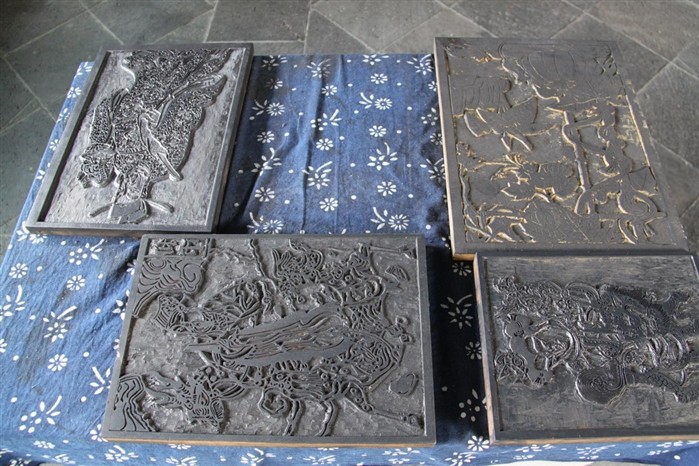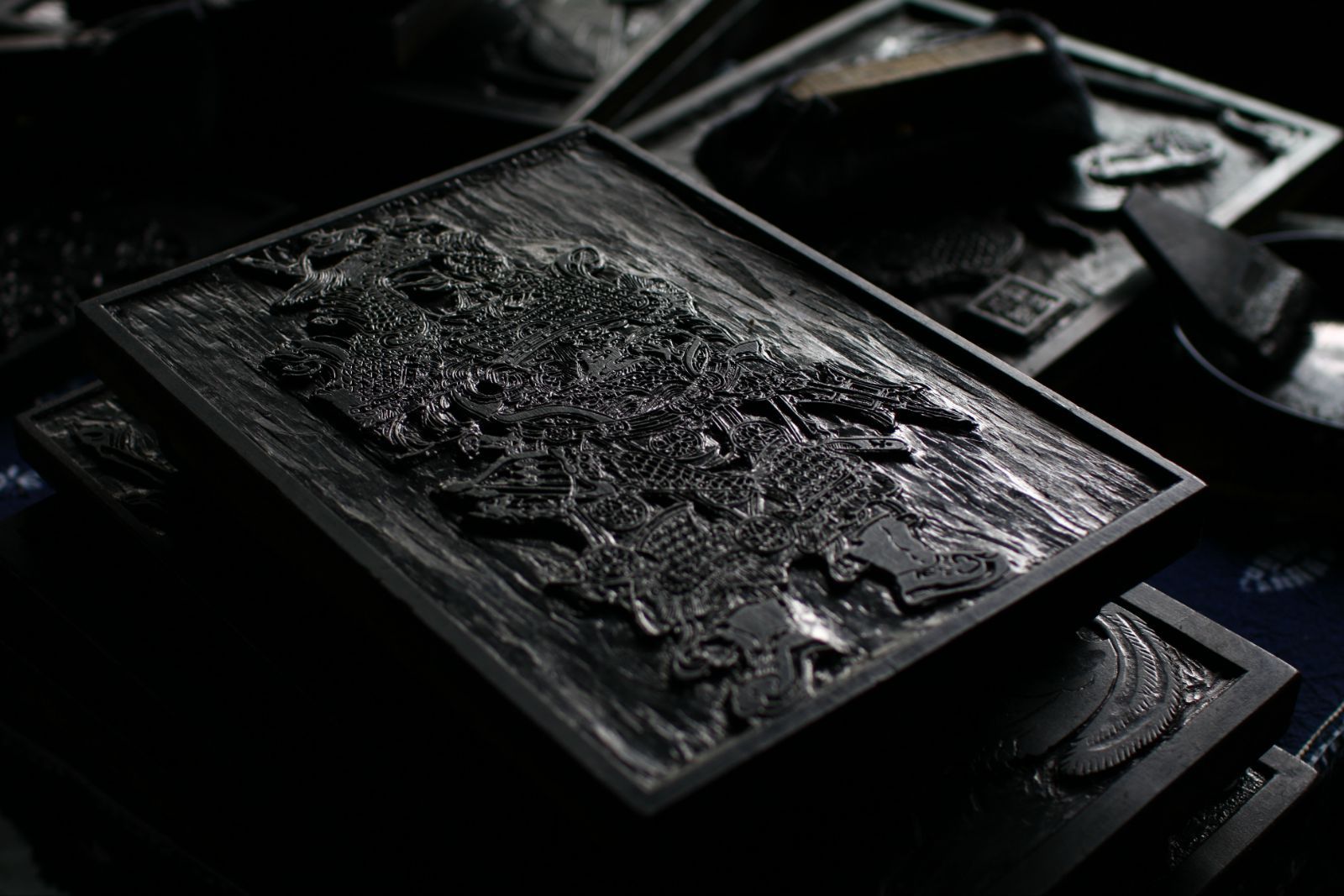
The divine horse of Tengchong merges calligraphy, painting and carving into an organic whole. Its shape is striking, bold, free and varied, far from the stereotype of a typical, simple woodcarving. The artist draws inspiration from people and nature and produces unrestrained creations in line with his understanding of deities and bodhisattvas. The patterns include deities, ghosts, spirits, birds, animals, mountains and rivers. According to analysis of existing works, the divine horse of Tengchong mainly draws on the following subject-matter: first, worship of nature in primitive religion, such as heaven and earth, the sun palace, the moon hall, and the mountain god; second, hunting and traveling in the agricultural society, such as male and female deities of land, the hunting god, and the god of transportation; third, celebrations and domestic matters, such as the god of marital intimacy and the god of safety; fourth, worship of ancestors, ghosts and spirits, such as Marquis Guan Yu; fifth, the deities of different trades, such as Confucius and the woodworking master Lu Ban. Confucius classics are also reflected in paper horse, which tells people what should and should not be done and has the practical significance of social education. A large number of woodblock paintings with Buddhist scriptures can be included among works of paper horse.

In Tengyue Divine horse Art Gallery of Heshun Town(腾越神马艺术馆), Tengchong County, 303 woodblocks carved with divine horses-collections of Mr. Jia Zhiwei-are on exhibition. These woodblocks reflect the history of almost 200 years in the development of the art of divine horse. They are an invaluable resource as research on folk customs and religion, as well as being a precious art collection. The curious, fantastic images on the woodblocks, the primitive straightforwardness and unruliness are wonderfully esoteric.
Paper horse, this art that originated in the Central Plains and has been little known for a long time, has been preserved in the region inhabited by minority ethnic groups in the depths of the mountains in Yunnan Province. Compared with such highbrow art as elegant porcelainware and exquisite brocade embroidery, paper horse is but "a song of the rustic poor" -colorless and in plain clothes. However, in their conscientiously observed deities, a unique and strongly human element can be gleaned, and by closely examining those characters, you will learn a bit about the actual lives and spiritual sustenance of their ancestors.

The paper horse of Tengchong, which is locally called "divine horse," as with paper horses of other regions, was introduced from the central plains. With the paper horse of the Han nationality as its basis, Yunnan has gradually formed paper horses with local characteristics by integrating the local customs of worshipping national deities, ghosts and spirits in the primitive religions. The art of making "divine horse" is a recreation based on the rich folk culture of the central plains and the folk art among ethnic minorities in the frontiers of Yunnan Province.
In essence, the paper horse is a black-white woodblock painting and a monochromatic printing from a carved woodblock, that is, black-white woodcarving. The printing of the horse is simple. Usually prepared Chinese ink, soot from the bottom of pans, ink in red, blue and black are used as the printing materials. The natural colors of the paper usually are used and, although little attention is paid to the quality of the paper, the quality of the paper, the quality of the tissue paper produced in Tengchong is considered the best. In printing, first, a brush is dipped in color and brushed on the woodblock and then the woodblock is covered with paper. The paper is pressed by being lifted from the woodblock; thus, the finished paper horse. The majority of the people buying the paper horse do not care about the quality, as long as it meets the definition of paper horse they are satisfied, because ultimately it will be burned, unlike New Year paintings, which are pasted on doors and walls.
The divine horse of Tengchong merges calligraphy, painting and carving into an organic whole. Its shape is striking, bold, free and varied, far from the stereotype of a typical, simple woodcarving. The artist draws inspiration from people and nature and produces unrestrained creations in line with his understanding of deities and bodhisattvas. The patterns include deities, ghosts, spirits, birds, animals, mountains and rivers. According to analysis of existing works, the divine horse of Tengchong mainly draws on the following subject-matter: first, worship of nature in primitive religion, such as heaven and earth, the sun palace, the moon hall, and the mountain god; second, hunting and traveling in the agricultural society, such as male and female deities of land, the hunting god, and the god of transportation; third, celebrations and domestic matters, such as the god of marital intimacy and the god of safety; fourth, worship of ancestors, ghosts and spirits, such as Marquis Guan Yu; fifth, the deities of different trades, such as Confucius and the woodworking master Lu Ban. Confucius classics are also reflected in paper horse, which tells people what should and should not be done and has the practical significance of social education. A large number of woodblock paintings with Buddhist scriptures can be included among works of paper horse.
In Tengyue Divine horse Art Gallery of Heshun Town, Tengchong County, 303 woodblocks carved with divine horses-collections of Mr. Jia Zhiwei-are on exhibition. These woodblocks reflect the history of almost 200 years in the development of the art of divine horse. They are an invaluable resource as research on folk customs and religion, as well as being a precious art collection. The curious, fantastic images on the woodblocks, the primitive straightforwardness and unruliness are wonderfully esoteric.
Paper horse, this art that originated in the Central Plains and has been little known for a long time, has been preserved in the region inhabited by minority ethnic groups in the depths of the mountains in Yunnan Province. Compared with such highbrow art as elegant porcelainware and exquisite brocade embroidery, paper horse is but "a song of the rustic poor" -colorless and in plain clothes. However, in their conscientiously observed deities, a unique and strongly human element can be gleaned, and by closely examining those characters, you will learn a bit about the actual lives and spiritual sustenance of their ancestors.
Admission Fee:¥0

You will only receive emails that you permitted upon submission and your email address will never be shared with any third parties without your express permission.
